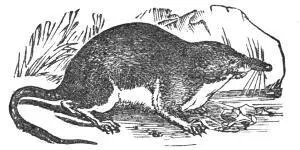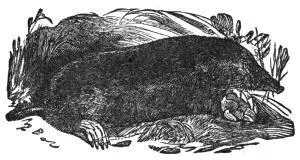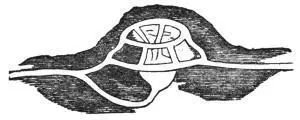John George Wood - The Common Objects of the Country
Здесь есть возможность читать онлайн «John George Wood - The Common Objects of the Country» — ознакомительный отрывок электронной книги совершенно бесплатно, а после прочтения отрывка купить полную версию. В некоторых случаях можно слушать аудио, скачать через торрент в формате fb2 и присутствует краткое содержание. Жанр: foreign_prose, foreign_antique, на английском языке. Описание произведения, (предисловие) а так же отзывы посетителей доступны на портале библиотеки ЛибКат.
- Название:The Common Objects of the Country
- Автор:
- Жанр:
- Год:неизвестен
- ISBN:нет данных
- Рейтинг книги:4 / 5. Голосов: 1
-
Избранное:Добавить в избранное
- Отзывы:
-
Ваша оценка:
- 80
- 1
- 2
- 3
- 4
- 5
The Common Objects of the Country: краткое содержание, описание и аннотация
Предлагаем к чтению аннотацию, описание, краткое содержание или предисловие (зависит от того, что написал сам автор книги «The Common Objects of the Country»). Если вы не нашли необходимую информацию о книге — напишите в комментариях, мы постараемся отыскать её.
The Common Objects of the Country — читать онлайн ознакомительный отрывок
Ниже представлен текст книги, разбитый по страницам. Система сохранения места последней прочитанной страницы, позволяет с удобством читать онлайн бесплатно книгу «The Common Objects of the Country», без необходимости каждый раз заново искать на чём Вы остановились. Поставьте закладку, и сможете в любой момент перейти на страницу, на которой закончили чтение.
Интервал:
Закладка:
There is, perhaps, hardly one of my readers who does not know some one person who finds an exquisite delight in hurting the feelings of others by various means, such as ridicule, practical jokes, ill-natured sayings, and so on. If so, he will be tolerably certain to find that the same person is especially thin-skinned himself, and resents the least approach to a joke of which he is the subject.
So, if the shrew were to be the afflicted individual, and the human the victim, there would be found no one so averse to the medicinal process as he who had formerly resorted to it under different circumstances.
This principle is finely carried out, in the terrible scene of Dennis, the executioner’s, last hours in Barnaby Rudge .
These are not pleasant subjects; and we will pass on to another shrew that is generally found in the water, and called from thence the Water-shrew. It is a creature that may be found in many running streams, if the eyes are sharp enough to observe it, and is well worth examination. As it dives and runs along the bottom of the stream, it appears to be studded with tiny silver beads, or glittering pearls, on account of the air-bubbles that adhere to its fur. I have seen a whole colony of them disporting themselves in a little brooklet not two feet wide, and so had a good opportunity of inspecting them.

WATER-SHREW.
I may mention here, as has been done in one or two other works, that nothing is easier than to watch animals or birds in their state of liberty. All that is required is perfect quiet. If an observer just sits down at the foot of a tree, and does not move, the most timid creatures will come within a few yards as freely as if no human being were within a mile. If he can shroud himself in branches or grass or fern, so much the better; but quiet is the chief essential.
It is impossible to form an idea of the real beauty of animal life, without seeing it displayed in a free and unconstrained state; and more real knowledge of natural history will be gained in a single summer spent in personal examination, than by years of book study.
The characters of creatures come out so strongly; they have such quaint, comical, little ways with them; such assumptions of dignity and sudden lowering of the same; such clever little cheateries; such funny flirtations and coquetries, that I have many a time forgotten myself, and burst into a laugh that scattered my little friends for the next half-hour. It is far better than a play, and one gets the fresh air besides.
These little water-shrews are most active in their sports and their work, for which latter purpose they make regular paths along the banks. And as to their sport, they chase one another in and out of the water, making as great a splash as possible, whisk round roots, dodge behind stones, and act altogether just like a set of boys let loose from the school-room. And then—what a revulsion of feeling to see a stuffed water-shrew in a glass-case!
Now for a few words respecting the distant relation of the shrews, namely, the mole. Of its near relation, the hedgehog, there will not be time to speak.
Every one is familiar with the little heaps of earth thrown up by the mole, and called mole-hills. But as the animal itself lives almost entirely underground, comparatively little is known of it; at all events, to the generality of those who see the hills. The mole is not often seen alive; and few who see it suspended among the branches by the professional killer would form any conception of the real character of this subterranean animal.
Meek and quiet as the mole looks, it is one of the fiercest, if not the very fiercest of animals; it labours, eats, fights, and loves as if animated by one of the furies, or rather by all of them together.

MOLE.
Intervals of profound rest alternate with savage action; and according to the accounts of country folks near Oxford, it works and rests at regular intervals of three hours each.
Useful as these creatures are as subsoil drain-makers, they sometimes increase to an inconvenient extent, and then the professed mole-catcher comes into practice, and destroys the moles with an apparatus apparently inadequate to such a purpose. But the mole is easily killed, and pressure he cannot survive; so the traps are formed for the purpose of squeezing the mole, not of smashing or strangling him.
The mole-catchers are in the habit of suspending their victims on branches, mostly of the willow or similar trees; but their object I could never make out, nor could they give me any reason, except that it was the custom.
When a mole is taken out of the ground, very little earth clings to it. There is always some on its great digging claws; but very little indeed on its fur, which is beautifully formed to prevent such accumulation. The fur of most animals “sets” in some definite direction, according to its position on the body; but that of the mole has no particular set, and is fixed almost perpendicularly on the creature’s skin, much like the pile of velvet. Indeed the mole’s fur has much the feel of silk-velvet; and so the title of the “Little gentleman in the velvet coat” is justly applied.
Those small heaps of earth that are so common in the fields, and called mole-hills, are merely the result of the mole’s travelling in search of the earth-worms, on which it principally feeds; and in their structure there is nothing remarkable.
But the great mole-hill, or mole-palace, in which the animal makes its residence, is a very different affair, and complicated in its structure. In it is found a central chamber in which the mole resides; and round this chamber there run galleries or corridors in a regular series, so as to form a kind of labyrinth, by means of which the creature may make its escape, if threatened with danger.
The accompanying cut shows a section of the mole-palace.

MOLE-HILL.
This palace is formed, if possible, under the protection of large stones, roots of trees, thick bushes, or some such situation; and is located as far as possible from paths or roads.
The food of the mole mostly consists of earth-worms, in search of which it drives these tunnels with such assiduity. The depth of the tunnel is necessarily regulated by the position of the worms; so that in warm pleasant days or evenings the run, as it is called, is within a few inches of the surface; but in winter the worms retire deeply into the unfrozen soil, and thither the mole must follow them. For this purpose it sinks perpendicular shafts, and from thence drives horizontal tunnels. It may be seen how useful this provision is when one thinks of the work that is done by the mole when providing for its own sustenance.
In the cold months, it drives deeply into the ground, thereby draining it, and preventing the roots of plants from becoming sodden by the retention of water above; and the earth is brought from below, where it was useless, and, with all its properties inexhausted by crops, is laid on the surface, there to be frozen, the particles to be forced asunder by the icy particles with which it is filled, and, after the thaw, to be vivified by the oxygen of the atmosphere, and made ready for the reception of seeds.
The worms have a mission of a similar nature; but their tunnels are smaller, and so are their hills. Every floriculturist knows how useful for certain plants are the little heaps of earth left by the worms at the entrance of their holes. And by the united exertions of moles and worms a new surface is made to the earth, even without the intervention of human labour.
Читать дальшеИнтервал:
Закладка:
Похожие книги на «The Common Objects of the Country»
Представляем Вашему вниманию похожие книги на «The Common Objects of the Country» списком для выбора. Мы отобрали схожую по названию и смыслу литературу в надежде предоставить читателям больше вариантов отыскать новые, интересные, ещё непрочитанные произведения.
Обсуждение, отзывы о книге «The Common Objects of the Country» и просто собственные мнения читателей. Оставьте ваши комментарии, напишите, что Вы думаете о произведении, его смысле или главных героях. Укажите что конкретно понравилось, а что нет, и почему Вы так считаете.












